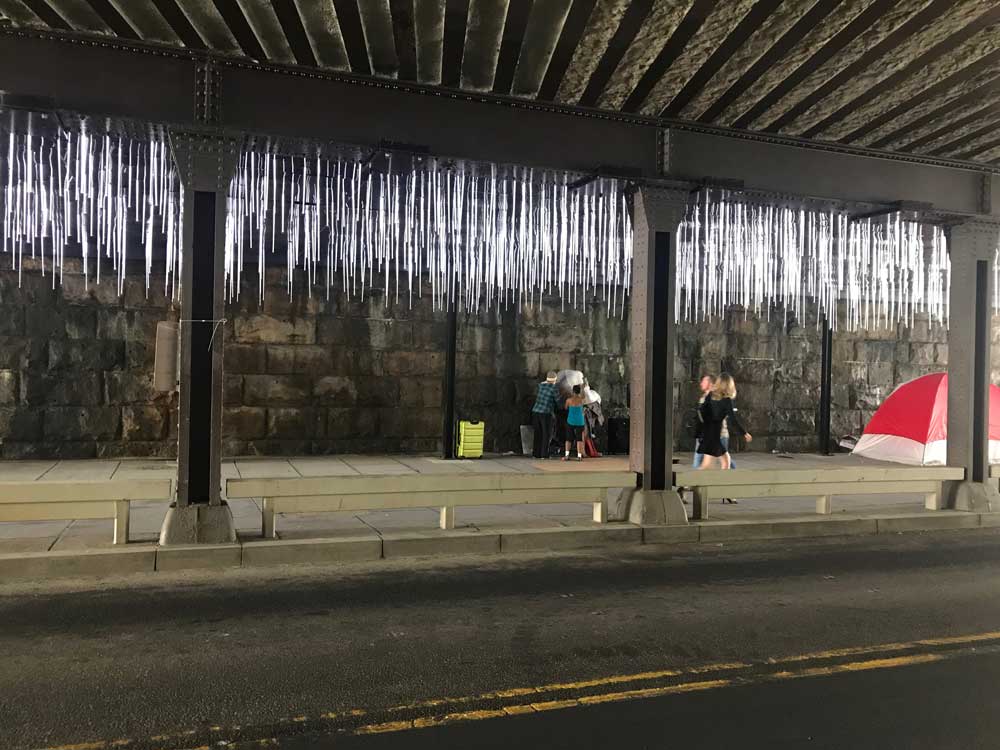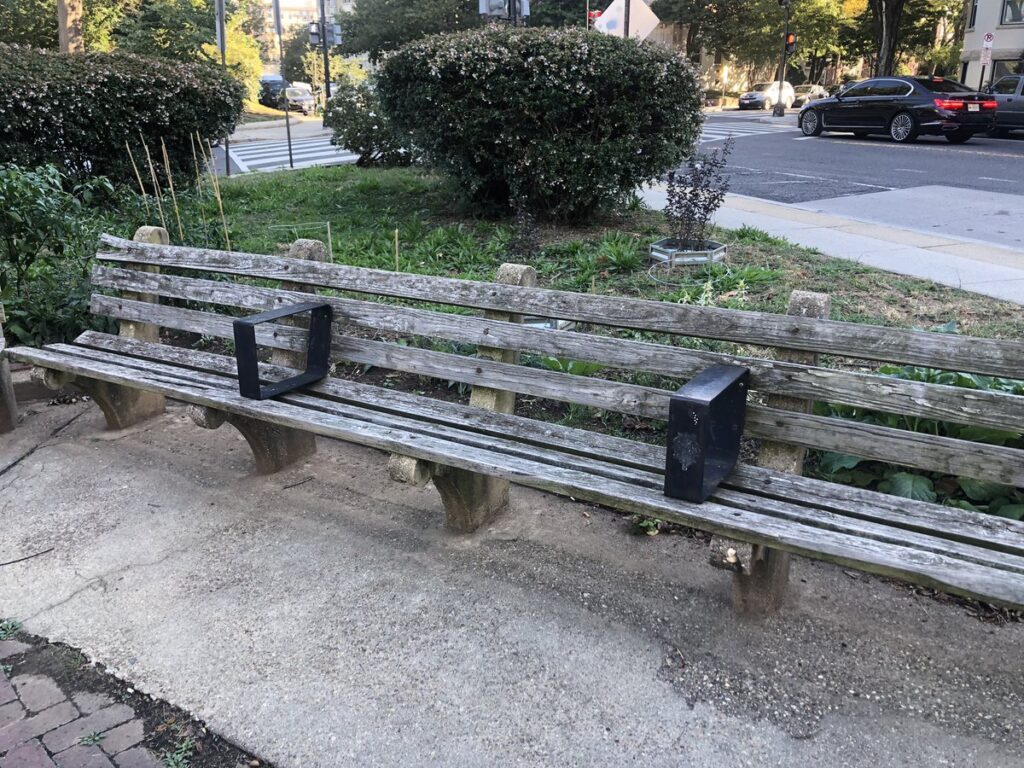 This article is part of our 2019 contribution to the DC Homeless Crisis Reporting Project in collaboration with other local newsrooms. You can see all of our collective work published throughout the day at DCHomelessCrisis.press and join the public Facebook group to discuss how to act on this information and add context to areas we may have overlooked.
This article is part of our 2019 contribution to the DC Homeless Crisis Reporting Project in collaboration with other local newsrooms. You can see all of our collective work published throughout the day at DCHomelessCrisis.press and join the public Facebook group to discuss how to act on this information and add context to areas we may have overlooked.
By Miriam’s Kitchen, HIPS and Everyone Home DC
As social service providers with a combined total of nearly 115 years working to end homelessness in Washington, D.C., we are deeply troubled by the current debate around homelessness encampments in NoMa. While encampments are not ideal, and common-sense strategies should be put in place to protect the health and safety of all of our neighbors, they are a natural byproduct of D.C.’s homelessness crisis. We worry that concentrating on encampments sidetracks D.C. from focusing on proven, humane, and client-centered solutions to end homelessness. As such, we ask the NoMa community, and all D.C. residents, to join us in advocating for the best-known solution to homelessness: housing.
As experts in this field, Miriam’s Kitchen, HIPS, and Everyone Home DC feel it is important to dismantle stereotypes about people experiencing homelessness and shift this conversation to focus on a D.C. where all of our neighbors have the housing they deserve. Here’s what we know:
1. People experiencing homelessness are our neighbors.
Too often, our neighbors experiencing homelessness are ignored and forgotten. We must remember that people living in encampments, on the streets and in shelters are our neighbors. They are NoMa residents, they are Ward 6 community members, and they are D.C. voters. Only when their needs are met with the same fervor as the needs of other community members will D.C. reach its full potential.
2. Encampments are indicative of larger homelessness crisis.
The continued presence of homeless encampments in NoMa and across D.C. reminds us that we are in the middle of a homelessness crisis. In fact, over 6,500 of our neighbors experience homelessness on a given night. Few places illustrate this crisis more than NoMa, where rapid gentrification and the loss of low-income housing have pushed many long-term D.C. residents, most of whom are people of color, into tents, onto the streets and out of the city. In addition to driving homelessness, the increasing cost of living pushes people experiencing long-term homelessness into more visible locations, such as underpasses.
3. Experiencing homelessness is often unsafe.
In our nation’s capital, 54 people died without housing in 2018. Living outside exacerbates and causes health complications, makes it hard to rest and store medications, exposes our neighbors to the elements and leaves them vulnerable to violence. We must challenge the stereotype that our neighbors experiencing homelessness are dangerous and remember that people experiencing homelessness are more likely to be the victims of crime than the perpetrators.
The NoMa BID’s letter states that there is “no similar advocacy group devoted to making sure that people can safely pass through public spaces.” However, Collective Action for Safe Spaces does just that, and we are proud that they strongly support our work to focus on housing to end homelessness. True safety will only come when the needs of all of our community members, including housing for our neighbors experiencing homelessness, are met.
4. Homelessness is caused by broken systems.
Encampments, like all forms of homelessness, result from broken systems, not broken people. As visible reminders of homelessness, encampments must serve as a clarion call to focus on proven solutions to end homelessness. In D.C., people of color are overrepresented among our homeless neighbors. In fact, while 47 percent of DC residents overall are Black, 87 percent of individuals experiencing homelessness are Black. The racialized nature of homelessness proves that oppressive systems, like institutionalized racism, must be disrupted to end homelessness.
The lack of affordable housing—not mental health and substance use—is the leading driver of homelessness. Implying that homelessness is a personal failing is dangerous, harmful and wrong. Our decades of experience and deep relationships with encampment residents continue to teach us that homelessness is not a choice, but rather something that happens to individuals and is propelled by broken systems. One such broken system is D.C.’s severe lack of low-income housing, which affects our neighbors of color the most. In D.C., an average one-bedroom apartment costs $1,454 a month, meaning that somebody earning minimum wage would need to work 80 hours a week to afford rent.
Only by addressing the root causes of homelessness—such as the lack of adequately paying jobs, the dearth of low-income housing, and systemic racism—will D.C. ensure all of our neighbors have the housing they need to thrive.
5. Housing ends homelessness.
D.C. is a national leader in using data-driven and person-centered national best practices to end homelessness. Since the launch of Homeward DC, D.C.’s strategic plan to end homelessness, over 5,000 individuals have moved from streets and shelters into housing. In DC, 93 percent of individuals who exit homelessness into permanent housing do not return to homelessness within one year. This proves that housing and comprehensive, client-centered services end homelessness. While D.C.’s progress to end homelessness is going in the right direction, much more is needed. The city’s fiscal year 2020 budget will end homelessness for 615 individuals, meaning that at least 1,300 individuals will continue to experience homelessness during the coming year.
While D.C. works towards our shared goal of ending homelessness, we are also committed to providing services that meet the existing needs of our neighbors living without housing, both in NoMa and around D.C.. Some of the ongoing work to ensure the health and safety of all our neighbors may go unseen, but is nevertheless important. This includes harm reduction (such as needle exchange, overdose prevention, and naloxone distribution); professional outreach teams actively building rapport and engaging with encampment residents; and marked improvements to D.C.’s homeless shelter system.
We must work together to ensure our elected officials double down on these investments in housing and comprehensive services. BIDs have and continue to play a vital role in D.C.’s shared goal of ending homelessness. We implore the NoMa BID and all NoMa residents to join with us, the 102 organizations and over 5,500 individuals who support The Way Home Campaign, to call on our elected officials to invest in proven solutions and end long-term homelessness in D.C.
Click here to join The Way Home Campaign and ensure D.C. focuses on proven solutions to end homelessness.
Miriam’s Kitchen, HIPS and Everyone Home D.C., are service provider and advocacy organizations who belong to The Way Home Campaign. This is one of three responses to an open-letter letter written by the NoMa Business Improvement District that we published as a collection on Aug. 29. Read the others here.








